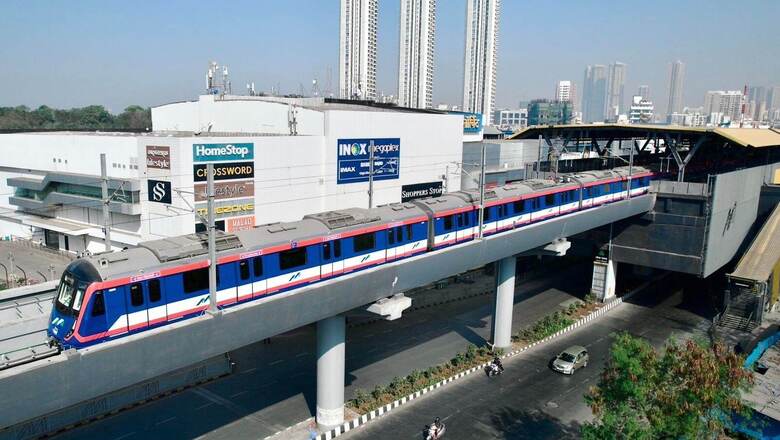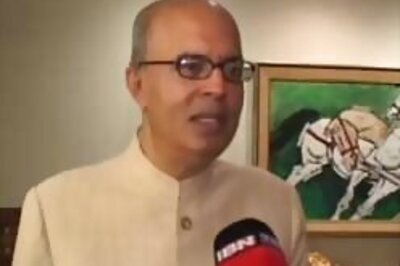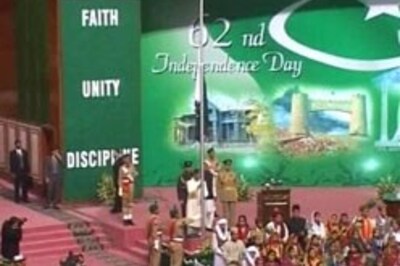'Deaths on Tracks Motivated Us to Deliver Faster': Catching The Train of Thought behind Mumbai Metro

views
Every year, almost 3,500 people fall to their death from an overcrowded local train. “If we are able to deliver the Metro even one day in advance, we will be able to save 10-12 lives. That is what drove us all. Our engineers, our teams worked with that motivation,” said IAS officer Pravin Darade. Recently, days after Prime Minister Narendra Modi inaugurated the second phase of Metro 2A and Metro 7, over a million people had travelled on the mass transit network. In fact, in less than a year since the commissioning of phase 1, over 1 crore people have already travelled on them.
Mumbai Metro 2A and 7 have partially decongested the notoriously jam-packed Western Expressway, have helped ease traffic on SV Road and Link road, and have provided seamless east-west, north-south connectivity to the western suburbs of Mumbai, catering to almost 60 per cent of the city’s population.
This is the story behind the planning and implementation of the lines that are making waves in Mumbai, and are attracting everyone including celebrities to travel on them. Recently, Akshay Kumar took the Metro. Many celebrities including Sumit Raghavan have conveyed their joy at such key infrastructure projects.
Recollecting memories of early-hour visits, late-night meetings, coordination challenges, Pravin Darade, who was the additional metropolitan commissioner and project director between 2016 to 2019, when 70 per cent work of Metro 2A and Metro 7 was completed, opened up about the journey and the challenges.
“A common Mumbaikar spends almost five to six hours commuting to work. This drains his energy, affects productivity. The idea was to make sure that the travel time was reduced and comfort was provided,” Darade said. “Construction of Metro line 7 and 2A were the most challenging tasks. Mumbai is a linear city, and we have two lifelines — Western Express Highway and Eastern Express Highway. The whole population comes on these highways. We used to have very limited time — from 12 midnight to 5 o’clock in the morning. All the launching of the work had to be done at midnight.”
The sleep of the residents too is important, MMRDA commissioner SVR Srinivas said. “And one had to be mindful while planning night activities too. It was very challenging — right from planning to execution. There are several utility lines that run from underground. Some utility wires are wafer-thin optic fibres. One had to be very careful of those services as well, as none of them are mapped,” he added.
Shifting of high-tension lines was one of the unique challenges as far as Mumbai is concerned, Darade said. “There are different establishments. Their consent and permission needs to be taken for the smallest of activities. All have to be on board. There has to be constant coordination. We also needed permissions from the defence establishments which were on the way,” he said.
Land acquisition
The biggest challenge, officials said, was land acquisition for the depots. In a city like Mumbai where real estate is like gold and the value of land is paramount, to get land from various authorities, from people, to clear illegal encroachments, to rehabilitate them, to hold talks with the Centre for their land, were all parallel processes that needed to be undertaken.
“I still remember, Adarsh Nagar, MHADA colony encroachments had to be removed. Similarly, Pushpa Park encroachment had to be removed and we had to rehabilitate them. I was really shocked to see them back. At a time when Metro work had started from both sides and there was emptiness in between. That was very challenging. But I feel, there is light at the end of the tunnel,” MMRDA commissioner said.
Darade recollected a high point when the Prime Minister announced a cabinet decision to hand over the Centre’s land for Metro project in Mumbai. “We needed at least 225 acres of land for the Metro car depot. Acquiring that kind of land for 12 depots – it was almost 200 acres of land. The task was huge and very challenging. We were very happy when we could overcome that challenge and we got that land from the central government. Within less than two years, there was a cabinet decision that this land was being given for Mumbai people. We started very aggressively,” he said. “We used to start field visits at 6 o’clock every morning and would finish by 1 o’clock.”
When the CM came visiting at 2am
Once, the then Chief Minister Devendra Fadnavis wanted to take stock of the construction work. “He said he wanted to see the progress of the work with his own eyes. Most of the major construction activity was conducted at night. Girders were launched at that time. So he came to visit at 2 AM in the morning. He went around, saw how the work was progressing, and how difficult it was to launch those girders,” Darade recollected.
Idea to avoid time and cost overruns
To make sure that time and cost overruns were avoided, several ideas were implemented, he said. The most important was to bring about an attitudinal change among the MMRDA staff. “We told the staff that contractors are partners and not different persons. Previously, there used to be two sides. One was the contractors and the other was the engineers. Every week, we used to sit together to sort out that problems.”
“Time and cost overruns were our challenges. We also tried to make sure that contractors got their payments within five working days. These are all mega projects. Contractor started getting payments on time. He was assured that he didn’t need to buy money from the market with interest. So they could complete our project work within time with the least cost for the people because this is all public money,” he said.
He said that while each DPR takes around 1.5 years to two years, his team had prepared 12 DPRs in three years by avoiding linear work.
Coordination challenge
Speaking about the mammoth task of coordination of teams sitting in not just different parts of the country, but different parts of the world, metropolitan commissioner SVS Srinivas said that the most important realisation was that not just the physical construction, but also the systems needed to speak with each other.
“I recollect the systems part. Some parts come from Hitachi, another system comes from Alstrom. One single moment is when we discovered and resolved that it is not the construction of the civil work alone, but also several intricate systems that have to speak to each other and each of them are being supplied and operated by separate and different agencies. Hitachi, Alstrom, and BHEL supplied different things. Electricals are separate. Rolling stock itself was a huge challenge. We had to take about 50 meetings just for rolling stock. But the first meeting was very crucial that triggered a lot of cooperation for integration of daily systems. This happened step-by-step in the years 2020-21. Without that, we wouldn’t have seen the light of the day,” he said.
No flooding challenge
“Once these Metro lines are completed, we will create a carrying capacity of 1 crore every day plus the 40 lakh suburban train network. There will be no congestion. Also, Mumbai witnesses unprecedented rains. Fortunately, 70% of the metros are elevated. Only 30% is underground. So even during severe flooding, Mumbai will not come to a standstill. Mumbaikars will be able to reach their home as well as office during the floods in monsoon,” Darade said.
Read all the Latest India News here



















Comments
0 comment